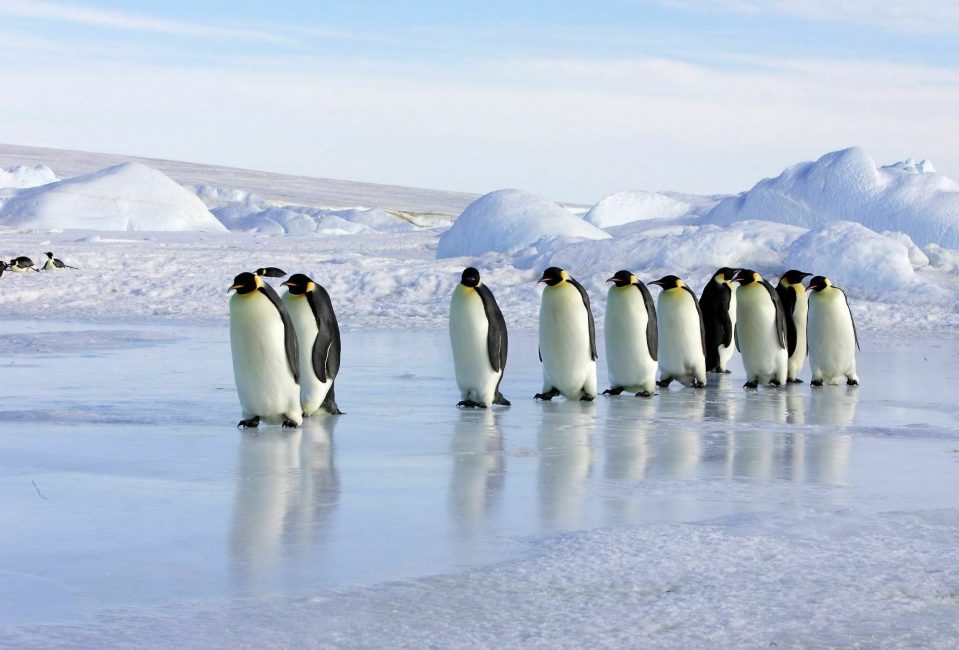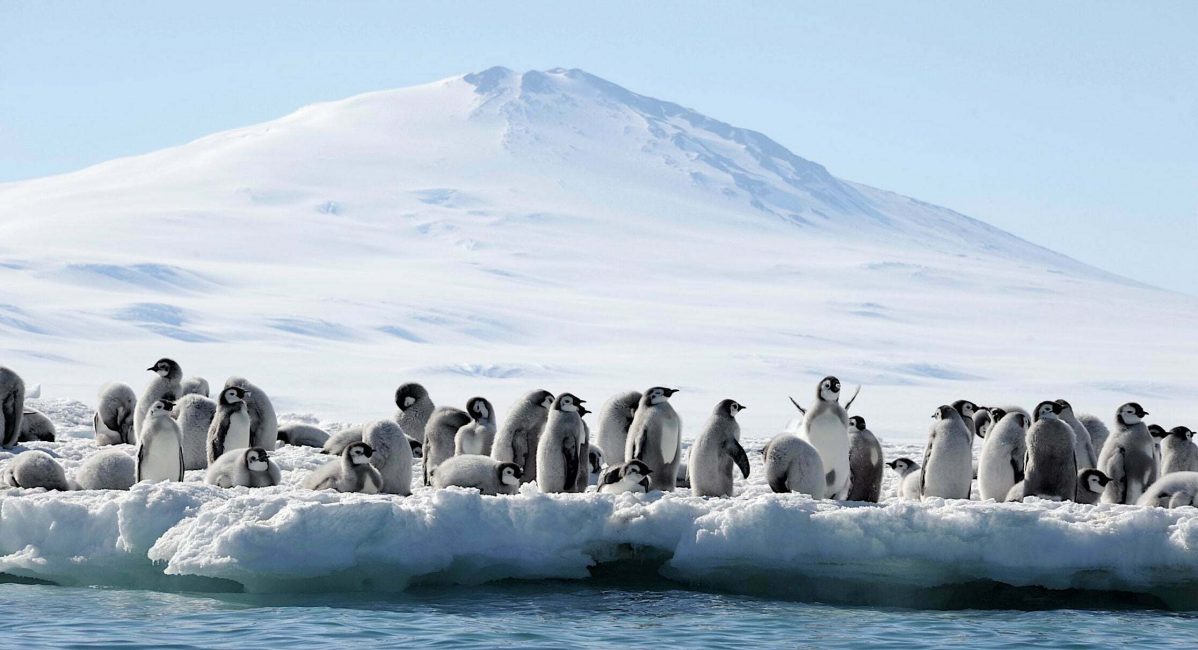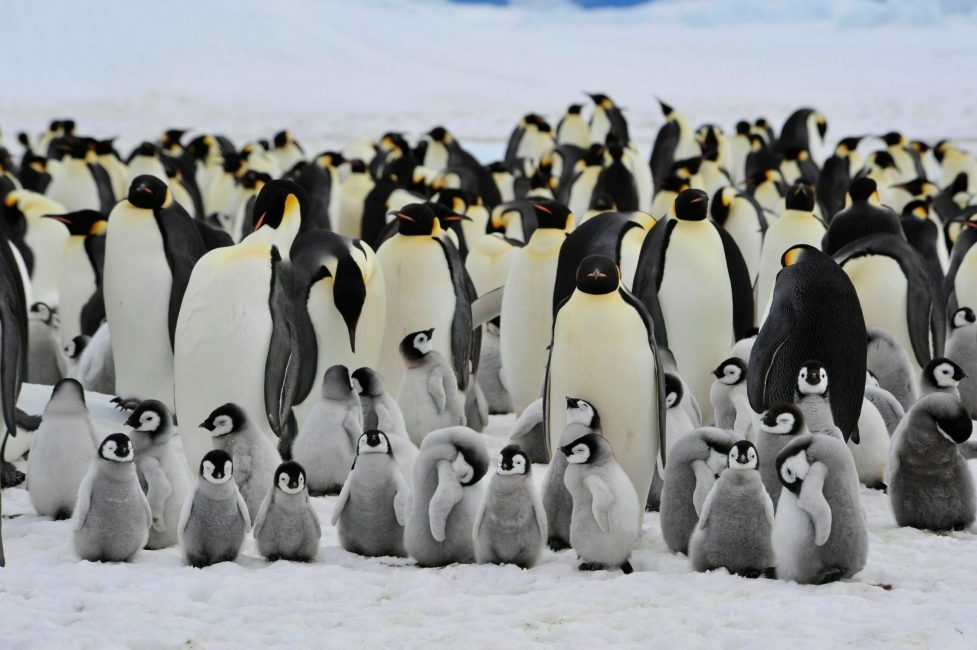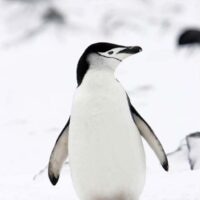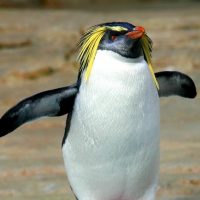Fast facts
EMPEROR PENGUINS
Scientific name: Aptenodytes forsteri.
Height: 43–51 inches (1.1–1.3 meters).
Weight: 49–99 pounds (22–45 kilograms).
Average lifespan in the wild: 15–20 years.
IUCN Red List status: Near threatened, population decreasing (2019).
Range
EMPEROR PENGUINS
Emperor penguins spend their entire lives in the ocean and ice surrounding Antarctica. Over 60 emperor penguin colonies (sometimes called rookeries) have been recorded, generally within 50 miles (80 kilometers) of the coast. Emperor penguins establish colonies on solid plates of fast ice: sea ice attached to the land. They depend on nine months of stable ice cover each year to successfully breed and raise their chicks.
As the climate continues to warm and Antarctic sea ice cover becomes more unpredictable, the future of emperor penguins is uncertain. Declining sea ice is forcing some colonies to relocate, and researchers warn that if current trends continue, emperor penguins are on a path to extinction.
Identification
EMPEROR PENGUINS
Emperor penguin hatchlings have gray skin and no feathers, and weigh around 0.7 pounds (315 grams). Over the next couple of weeks grayish-blue feathers begin to grow. Young chicks develop a black crown of feathers that extends from their bill over the back and sides of their heads, with white cheeks and a white chin.
Adult emperor penguins have black backs and white chests, with patches of orange and yellow on their heads, ears and upper chests, which fade to white. They have long black beaks with pink-to-orange stripes along the lower mandible. They have stiff black wings, with a wingspan of around 32 inches (80 centimeters)
Feeding
EMPEROR PENGUINS
Emperor penguins have a diverse diet, which can vary depending on the year, season, and where they live. Where sea ice is plentiful they may forage for ice fish, such as bald rock cod, in the sheltered waters underneath. They are also excellent open water swimmers, and have been known to swim well over 2,500 miles (4,000 kilometers) to foraging grounds with abundant squid, fish, and krill.
Foraging dives generally last 3 to 6 minutes at depths of 165-820 feet (50-250 meters), with shallower dives for krill and deeper dives for fish. While most of their dives fall within this range, scientists have found that they are capable of diving much deeper, and for much longer. In fact, emperor penguins have been recorded diving for over 25 minutes and deeper than 1640 feet (500 m): the deepest recorded dives made by any bird.

Life cycle
EMPEROR PENGUINS
As winter approaches, emperor penguins return to their colonies to breed after a summer foraging at sea. They can walk up to 125 miles (200 kilometers) to reach their rookeries on sea ice or fast ice (sea ice stuck ‘fast’ to the coast or sea floor).
Females lay one egg between May and June before returning to the sea to feed. Their partners remain with the egg, incubating it for 65 days on their feet under a ‘brood pouch’.
Males stay on the ice through the winter, surviving temperatures as low as – 58°F (- 50°C), winds up to 124 mph per hour (200 kph), and months of darkness. Faced with such conditions, they retain warmth by forming dense huddles. This process, which is called ‘social thermoregulation’, allows the penguins to generate temperatures of up to 100°F (37°C) at the center of the huddle.
Life cycle
EMPEROR PENGUINS
Females return to the colony in mid-July to relieve their mate and take over care of the egg, or their newly hatched chick. The males go to sea to break their fast of up to four months.
Chicks are completely dependent on their parents for warmth and food for about 50 days. During this time the parents take turns foraging at sea and returning to the colony to feed the growing chick. Once chicks are capable of surviving alone both parents go to sea, returning with as much food as possible to support the development of their chick.
Chicks fledge in December or January, and their parents prepare for their annual molt, which lasts around one month.
Predators
EMPEROR PENGUINS
Despite being the largest penguins in the world, emperors are vulnerable to predation from both marine mammals and seabirds.
While they are traveling or foraging at sea they may be targeted by orca (killer whales) and leopard seals.
Southern giant petrels and south polar skuas prey on emperor penguin chicks in their colonies on the ice.
Emperor penguins are vulnerable to a warming climate. Researchers warn that without urgent action, they are headed for extinction.
Protecting emperor penguins
ANTARCTIC PENGUINS
EMPEROR PENGUINS
Related reading
Now that you’ve learned about emperor penguins, read on to discover more about extraordinary Antarctica.
 ASOC
ASOC

